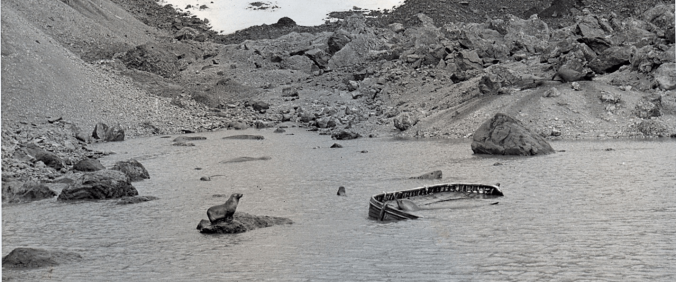
The last photo of Mawson’s Far Eastern Party, taken when they left the Australasian Antarctic Party’s base camp on November 10, 1912. By January 10, 1913, two of the three men would be dead, and expedition leader Douglas Mawson would find himself exhausted, ill and still more than 160 miles from the nearest human being.
For some it is the wind; for some, the terrible cold. For others, it is the endless, howling blankness of the landscape that drains resolve, or the blinding glare of sun on fresh-laid snow, or the week-long blizzards that pin intruders inside tents that groan under the weight of drifts of snow. Not even the strongest, fittest, hardiest groups– intensively trained, exhaustively equipped and painstakingly acclimatized–can be certain of escaping with their lives from a journey through the hostile wilderness of Antarctica.
Even today, with advanced foods, and radios, and insulated clothing, a journey on foot across these freezing wastes is the harshest of all tests that a human being can be asked to endure. A hundred years ago, it was far, far worse. Then, wool clothing absorbed snow and damp. High energy food came in an unappetizing mix of rendered fats called pemmican. Worst of all, extremes of cold pervaded everything; Apsley Cherry-Garrard, who sailed with Captain Scott’s doomed South Pole expedition of 1910-13, recalled that all his teeth, “the nerves of which had been killed, split to pieces” in temperatures that plunged as low as -77 degrees Fahrenheit.
Cherry-Garrard survived to write an account of his adventures, a book he called The Worst Journey in the World. But even his appalling Antarctic trek–made in total darkness in the depths of the Southern winter–was not quite so horrifying as the desperate journey faced one year later by the Australian explorer Douglas Mawson, an epic that has gone down in the annals of polar exploration as perhaps the most terrible ever undertaken in Antarctica.
Continue reading

